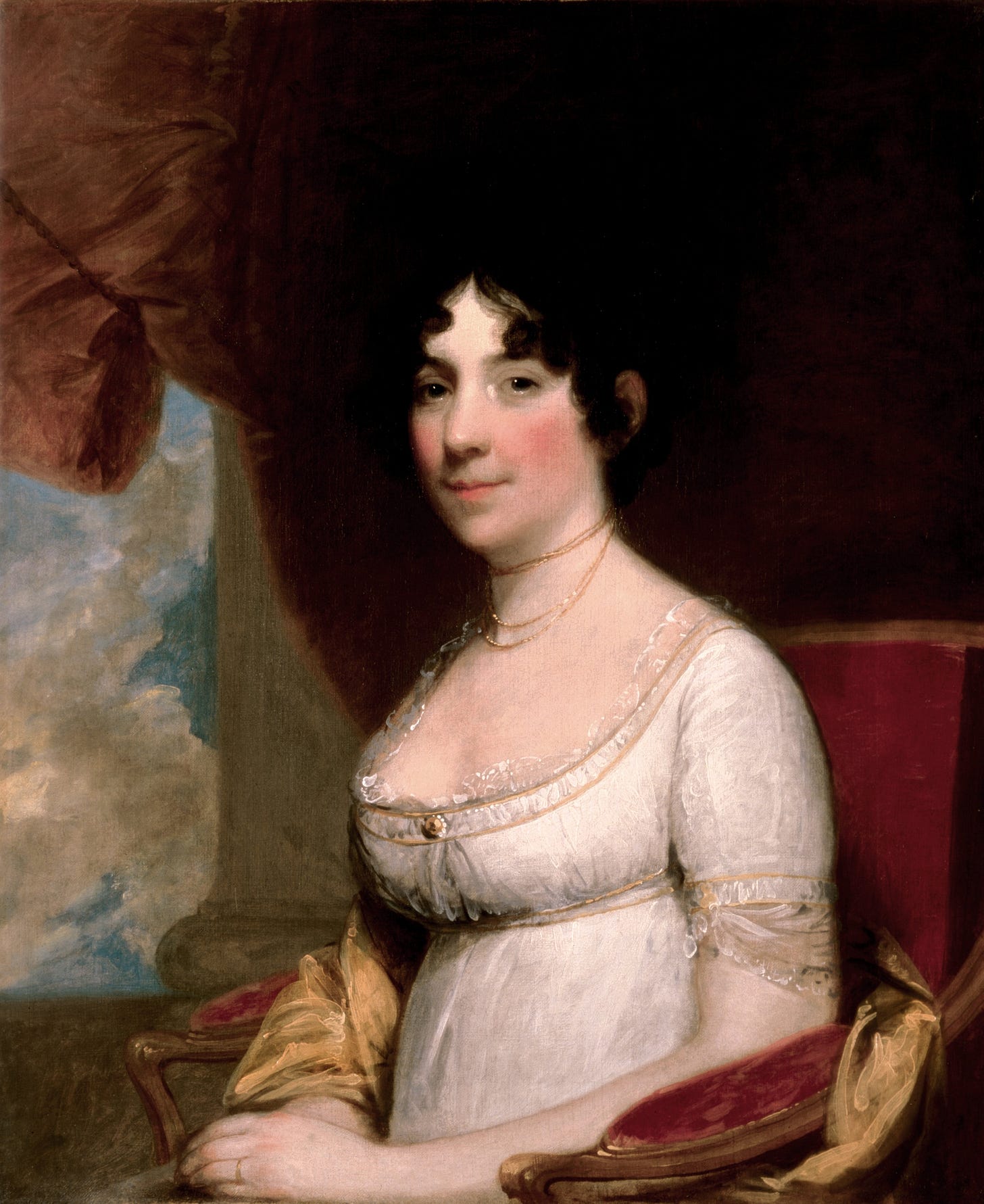TDIH: Dolley Madison
The Father of the Constitution, James Madison, ultimately won her over. In May 1794, the 43-year-old James sought an introduction to the 26-year-old widow.
On this day in 1849, Dolley Madison passes away. Did you know that this First Lady nearly died in poverty?
The vivacious First Lady had begun life as Dorothea “Dolley” Payne, daughter of a Virginia planter. Yet her father converted to Quakerism, freed his slaves, and moved to Philadelphia. He unfortunately wasn’t very successful there, which perhaps prompted what came next.
At the urging of her father, Dolley married John Todd, an established Quaker lawyer who could give her financial security. Thus, Dolley Payne became Dolley Todd.
That name wouldn’t last long.
In 1793, a yellow fever epidemic ravaged Philadelphia. Dolley lost her husband and one of her two sons. The new widow was left alone with an 18-month-old.
“Her smile, her conversation, and her manners are so engaging,” one acquaintance wrote, “that it is no wonder that such a young widow, with her fine blue eyes and large share of animation, should be indeed a queen of hearts.”
It was the Father of the Constitution, James Madison, who ultimately won her over. In May 1794, the 43-year-old James sought an introduction to the 26-year-old widow.
“Thou must come to me,” Dolley immediately wrote a friend. “Aaron Burr says that the great little Madison has asked to be brought to see me this evening.” In that day and age, of course, Dolley needed a woman to be with her when Madison arrived, for propriety.
Dolley and James hit it off and were soon married. The Quakers promptly expelled Dolley because of her decision, but Mrs. Madison was happy.
“[O]ur hearts understand each other,” she wrote James.
The newlyweds began life together in Philadelphia, then moved to Montpelier. But when James became Secretary of State in 1801, the Madisons moved to Washington, D.C.
President Thomas Jefferson was a widower, so Dolley often served as his hostess.
“The president's house was the seat of hospitality,” one observer wrote, “where Mrs. Madison always presided (in the absence of Mr. Jefferson's daughters) . . . . After the president's, the house of the secretary of state was the resort of most company. The frank and cordial manners of its mistress, gave a peculiar charm . . . . "
But she was more than just a hostess. She was James’s political partner.
When James won the presidency in 1808, his opponent would say that “I was beaten by Mr. and Mrs. Madison. I might have had a better chance had I faced Mr. Madison alone.”
The new President’s wife took to her new role immediately. She championed a home in D.C. for orphaned girls. She refurnished rooms in the White House. She hosted receptions that were so popular and crowded that they became known as “squeezes.” She entertained politicians on both sides with tremendous success.
Perhaps most famously, she saved a portrait of George Washington when the British burned D.C. during the War of 1812. “We shall rebuild Washington City,” Dolley said when she returned. “The enemy cannot frighten a free people.”
After Madison’s presidency, James and Dolley were plagued by gambling debts accrued by Dolley’s son. Those took a huge toll, and Dolley’s financial situation was poor when she was again widowed in 1836.
Dolley ultimately found stability by selling Madison’s papers to Congress, including his Notes on the Constitutional Convention. She also sold Montpelier, including (unfortunately) its slaves. Maybe it’s worth knowing that her financial position was so bad that one of her former slaves gave her money out of his own pocket.
Dolley followed James in death more than a decade after he passed. She was still much loved. Unsurprisingly, then, her obituary referred to her as the “first Lady in the land.”
Rest in peace, Mrs. Madison.
Sources can always be found on my website, here.





A Gracious Lady. R.I.P. Mr. and Mrs. Madison.
Through hardships, but with hard work and God , another heroine! 🇺🇸